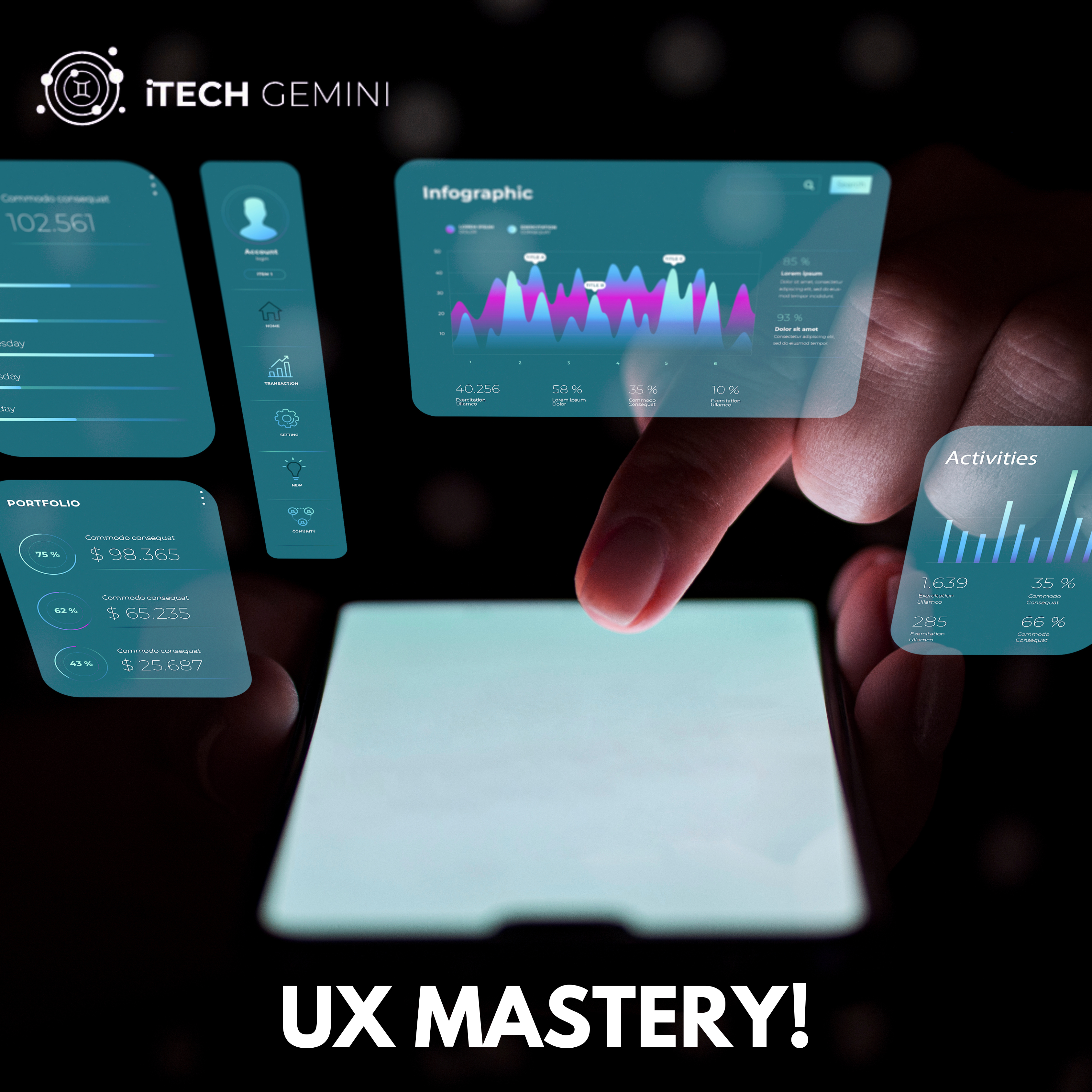UX Mastery: Mastering User Experience (UX) – A Comprehensive Guide
In the fast-evolving landscape of digital products and services, mastering User Experience (UX) has become a cornerstone of success. UX encompasses the entire journey of how users interact with a product, from the first touchpoint to ongoing engagement. It’s not just about creating visually appealing interfaces; UX focuses on understanding user needs deeply, designing intuitive and efficient experiences, and continuously refining based on user feedback. This guide explores the key principles, processes, tools, and trends that define UX mastery.
What is UX Mastery?
User Experience (UX) refers to the overall experience of a person using a product such as a website or application, and includes aspects of usability, accessibility, and pleasure derived from the interaction. Good UX design aims to meet the exact needs of the user without friction, creating a positive and memorable experience.
Key Elements of UX Mastery
- Usability: This refers to how easy it is for users to achieve their goals when using a product. It involves factors like intuitive navigation, clear information architecture, and efficient task completion.
- Accessibility: Ensuring that products are accessible to all users, including those with disabilities. Accessibility features can include screen readers, keyboard navigation, and color contrast considerations.
- Desirability: Designing interfaces that not only fulfill functional needs but also evoke positive emotions and engagement. This involves using visual and interactive elements that appeal to users on an emotional level.
- Credibility: Establishing trust and reliability through design and content. Users should feel confident in the accuracy of information presented and the security of their interactions.
The UX Design Process
Effective UX design follows a structured process to ensure that user needs are understood and met throughout the development lifecycle:
Research
- User Research: Gathering insights into user behaviors, motivations, and pain points through methods like interviews, surveys, and usability testing.
- Market Research: Understanding industry trends, competitor analysis, and broader market demands to inform design decisions.
Design
- Information Architecture: Structuring content and functionality in a logical and organized way to facilitate easy navigation.
- Wireframing: Creating low-fidelity representations of the product’s layout and structure to visualize the user flow and hierarchy of information.
- Prototyping: Building interactive prototypes to simulate the user experience and gather feedback before development begins.
Testing
- Usability Testing: Conducting tests with real users to identify usability issues, gather feedback, and validate design decisions.
- Accessibility Testing: Ensuring that the product can be used by people with disabilities, adhering to accessibility standards and guidelines.
Implementation
- Collaboration: Working closely with developers, designers, and stakeholders to implement the finalized designs while maintaining fidelity to the UX vision.
Tools and Techniques
Various tools and techniques support UX designers in creating effective and user-centric designs:
- Design Tools: Sketch, Adobe XD, Figma for creating wireframes, prototypes, and high-fidelity designs.
- Prototyping Tools: InVision, Marvel, Axure for simulating interactive experiences and gathering feedback.
- Usability Testing Tools: UserTesting.com, Hotjar, Optimal Workshop for conducting remote and in-person usability tests.
Why UX Matters
Investing in UX brings significant benefits to businesses and organizations:
- Business Impact: Improved UX leads to higher conversion rates, increased customer satisfaction, and reduced churn rates.
- User Engagement: Positive user experiences foster loyalty and encourage users to spend more time on the platform, enhancing brand loyalty.
- Competitive Advantage: Differentiating products in a crowded market by offering superior user experiences that meet and exceed user expectations.
Emerging Trends in UX Mastery
As technology advances, new trends and techniques emerge to enhance UX:
- Personalization: Tailoring experiences based on user preferences, behavior, and past interactions to create more relevant and engaging experiences.
- Voice User Interfaces (VUI): Integrating voice commands and natural language processing to enable hands-free interaction with digital products.
- Augmented Reality (AR) and Virtual Reality (VR): Using immersive technologies to provide more interactive and engaging user experiences, particularly in gaming, retail, and education sectors.
Continuous Improvement
- Analytics: Leveraging user data and analytics tools to track user behavior, identify patterns, and make data-driven design decisions.
- Feedback Loops: Establishing mechanisms to collect and analyze user feedback post-launch, allowing for iterative improvements based on real-world usage.
Conclusion
Mastering UX is an ongoing journey that requires a deep understanding of user needs, effective collaboration across teams, and a commitment to continuous improvement. By placing users at the center of design decisions and leveraging the right tools and techniques, businesses can create products that not only function well but also delight and engage users, driving long-term success and growth.


